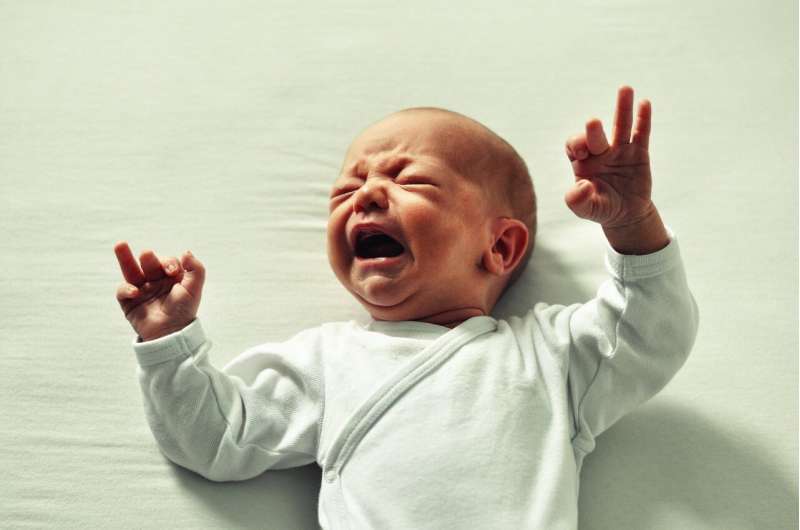This article has been reviewed according to Science X's editorial process and policies. Editors have highlighted the following attributes while ensuring the content's credibility:
fact-checked
trusted source
proofread
Acoustic analysis of pre-term babies' cries shows they are as developmentally healthy as full-term babies

Do pre-term babies cry differently than full-term babies? Yes, but upon age correction of pre-term babies, the differences may not be cause for concern, according to a new study conducted by a team of researchers from the Penn State Department of Communication Sciences and Disorders.
The researchers compared the acoustic features of cries collected from pre-term babies to the cries of full-term babies and found that noise differences resolved when the babies were age corrected—which involves calculating a baby's age by considering how many weeks pre-term they were born—to account for developmental expectations.
The team's findings contradict prior beliefs in the field that pre-term babies' noisier cries may indicate an increased risk of a negative developmental outcome compared to full-term babies. These results were published in Logopedics Phoniatrics Vocology.
"Early studies examining baby cries observed startling differences in the amount of noise in cries of a pre-term baby compared to that of a full-term baby, which was cause for alarm among researchers," said Michael Robb, professor of communication sciences and disorders and lead author on the study.
"These studies, however, did not include age correction of the pre-term babies. When we adjusted the age of the pre-term babies—2 months old compared to a 1-month-old full-term baby—statistically there was almost no difference in their cries."
When a baby is born pre-term, they have an extended period of development after birth that can impact a variety of developmental features that should have occurred prior to birth, including brain development and nervous system development. A baby born earlier than 37-weeks' gestation is considered pre-term, and as that number is brought even lower, babies are then considered very pre-term.
The pre-term babies examined in this study were classed as very pre-term, being born at 30 weeks' gestation, and were age corrected to one month after their due dates to ensure the most accurate comparison to a full-term baby at one month.
Babies of all ages produce two different types of cries: natural, spontaneous cries and distress cries. Natural cries occur when babies are hungry, need their diaper changed, etc. Distress cries—or pain cries—occur because of an uncomfortable physical event, such as reflex testing.
In this study, researchers examined distress cries of 20 pre-term babies compared to distress cries of 20 full-term babies. The cries were originally recorded during a study led by Robb in the 1990s. By only analyzing the distress cries, the researchers ensured all the babies were experiencing the same amount of distress as opposed to an uncontrollable natural cry.
Healthy babies typically have a basic melody and pitch to their cries. However, in about 10% of full-term babies' cries, the vocal cords will vibrate in unusual patterns, producing a much noisier cry that lacks the usual pitch and melody. The researchers set out to determine if this unusual noise occurred at a higher frequency in pre-term babies.
"When a baby cries, we know it is the nervous system that is regulating the vocal cords and causing them to vibrate," Robb said. "If the pre-term babies are crying differently and producing noisier cries more frequently than the full-term babies, even with an adjusted age, then we can infer being born pre-term is affecting nervous system development."
The researchers analyzed the acoustic pattern of the age-corrected pre-term babies' cries and the full-term babies' cries and found no difference in the number of cries or the amount of noise in the distress cries, leading the researchers to conclude that occasional variation in cry patterns is developmentally normal. Their findings suggest that the presence of noisy cries is not a good predictor of a baby's developmental outcome, Robb said.
"Based on our results, we can infer that this feature of crying is normal across healthy babies, both pre-term and full-term," Robb said. "This allows future research to shift the focus to other features of crying in babies and continue to expand the knowledge base of data available for predicting developmental outcomes of newborns."
More information: Nina Romo et al, Noise phenomena in distress cries of term and very preterm infants at term-equivalent age, Logopedics Phoniatrics Vocology (2024). DOI: 10.1080/14015439.2024.2342335





















